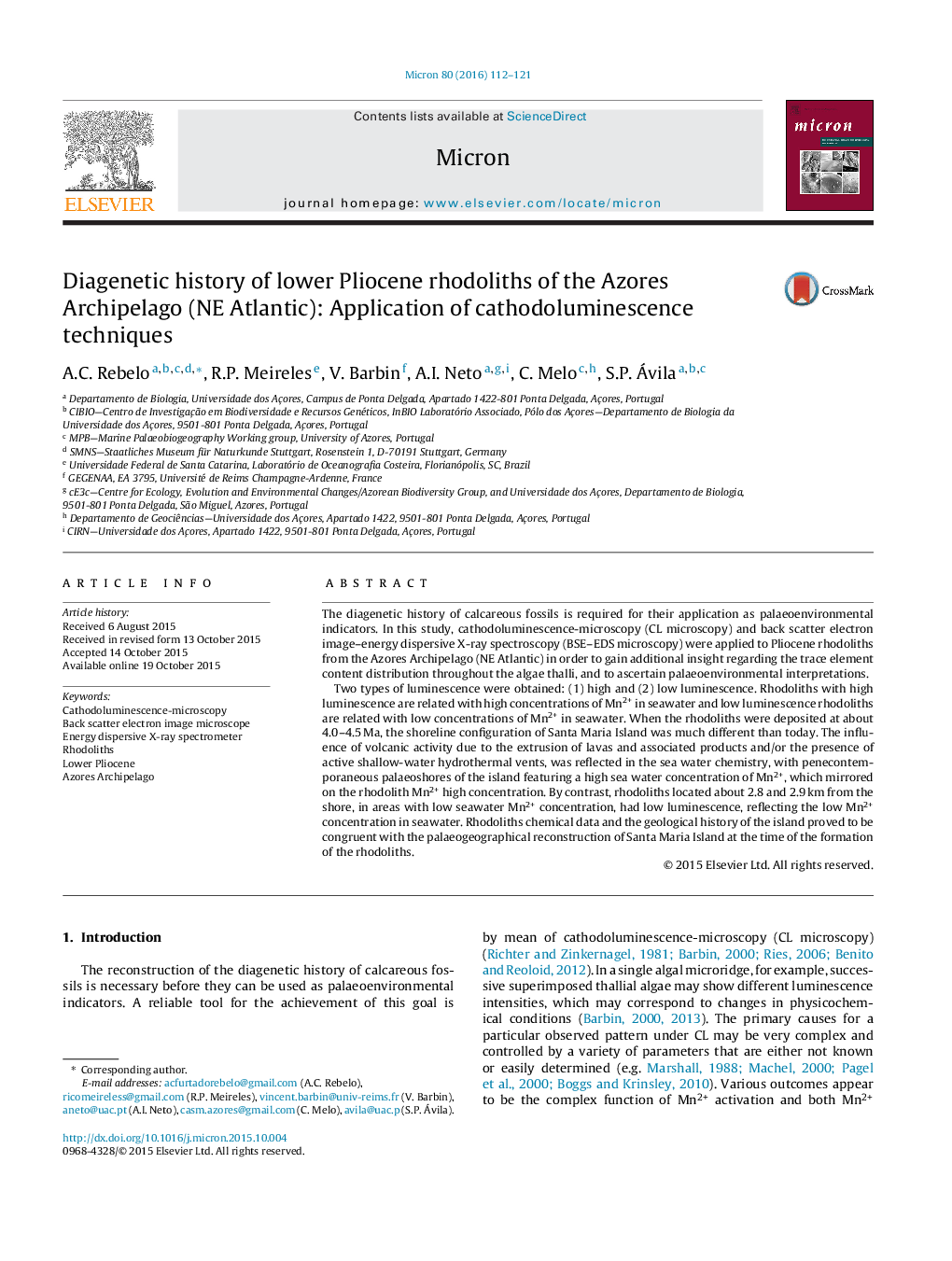| Article ID | Journal | Published Year | Pages | File Type |
|---|---|---|---|---|
| 7986532 | Micron | 2016 | 10 Pages |
Abstract
Two types of luminescence were obtained: (1) high and (2) low luminescence. Rhodoliths with high luminescence are related with high concentrations of Mn2+ in seawater and low luminescence rhodoliths are related with low concentrations of Mn2+ in seawater. When the rhodoliths were deposited at about 4.0-4.5Â Ma, the shoreline configuration of Santa Maria Island was much different than today. The influence of volcanic activity due to the extrusion of lavas and associated products and/or the presence of active shallow-water hydrothermal vents, was reflected in the sea water chemistry, with penecontemporaneous palaeoshores of the island featuring a high sea water concentration of Mn2+, which mirrored on the rhodolith Mn2+ high concentration. By contrast, rhodoliths located about 2.8 and 2.9Â km from the shore, in areas with low seawater Mn2+ concentration, had low luminescence, reflecting the low Mn2+ concentration in seawater. Rhodoliths chemical data and the geological history of the island proved to be congruent with the palaeogeographical reconstruction of Santa Maria Island at the time of the formation of the rhodoliths.
Related Topics
Physical Sciences and Engineering
Materials Science
Materials Science (General)
Authors
A.C. Rebelo, R.P. Meireles, V. Barbin, A.I. Neto, C. Melo, S.P. Ávila,
